LicensingSource.net explores how retailers, licensors and licensees are making the most of the UK’s Easter celebrations.
For those of us old enough to remember apple bobbing as the pinnacle of fun at Halloween, it seems as if seasonal celebrations get bigger every year. While Christmas remains the undisputed number one, World Book Day has morphed from a low-key educational event to a full-blown social-media festival, Father’s Day is a gifting category all its own, while Halloween, once considered an American import, has become a million-pound industry*.
As for Easter, it’s traditionally the time when we gift eggs and invite loved ones over for a slap-up Sunday lunch. But with experiential Easter family events, clothing, craft kits, greeting cards and dress-up all competing for consumers’ hard-earned ££s, is Easter – like us, after all those eggs – getting bigger too? And how are retailers, licensors and licensees making the most of the opportunities on offer?
In 2022, spending on Easter celebrations in the UK reached £1.3 billion, according to market and consumer data specialist Statista. Chocolate and sweets, unsurprisingly, are key purchases at this time of year, with data from e-commerce email marketing agency Ecommerce Intelligence predicting that Brits in 2023 will treat themselves to the tune of £978,802,048 on Easter confectionery alone. But with Cadbury Easter eggs coming out tops for consumers – and other big brands like Mars close behind – how do smaller producers compete?
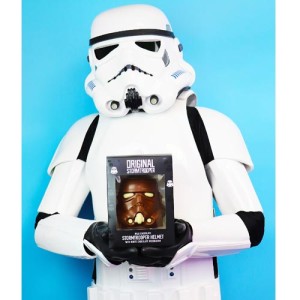 For food gifting company Treat Kitchen, the answer was partnering with licensor Original Stormtrooper. “A licensed product can often have the edge due to the heritage and affection fans have for characters and stories,” says Jess Barnett, Treat Kitchen’s brand director. “We know that movie fans love their merchandise so we wanted to create an edible piece of memorabilia that would offer Star Wars fans a great Easter egg alternative. We worked with our chocolatier in Belgium to create our Original Stormtrooper Milk Chocolate Stormtrooper Helmet Easter Egg – a super-authentic version of the iconic Stormtrooper helmet featuring all the recognisable elements.
For food gifting company Treat Kitchen, the answer was partnering with licensor Original Stormtrooper. “A licensed product can often have the edge due to the heritage and affection fans have for characters and stories,” says Jess Barnett, Treat Kitchen’s brand director. “We know that movie fans love their merchandise so we wanted to create an edible piece of memorabilia that would offer Star Wars fans a great Easter egg alternative. We worked with our chocolatier in Belgium to create our Original Stormtrooper Milk Chocolate Stormtrooper Helmet Easter Egg – a super-authentic version of the iconic Stormtrooper helmet featuring all the recognisable elements.
“Easter confectionery can appear very generic, ticking all the boxes in terms of colour, shape and design. Our product stands out from the crowd in all these areas and appeals to a whole new demographic, who now have an Easter product made with their interests in mind.”
It’s not just chocolate that consumers are hungry for at this time of year – it’s apparel, too.
 Vicki Radford is buying manager at George at Asda. “We actually see Easter as one of the most crucial moments in the year for kids’ clothing, and in some areas it surpasses Christmas for sales,” she says. “It’s the moment when we really see a step-change in mums’ buying habits for kids and marks that mindset change into spring purchasing. We are also seeing an increasing shift in gifting at this time of year where customers may select other items to gift instead of the traditional eggs.”
Vicki Radford is buying manager at George at Asda. “We actually see Easter as one of the most crucial moments in the year for kids’ clothing, and in some areas it surpasses Christmas for sales,” she says. “It’s the moment when we really see a step-change in mums’ buying habits for kids and marks that mindset change into spring purchasing. We are also seeing an increasing shift in gifting at this time of year where customers may select other items to gift instead of the traditional eggs.”
Surprisingly, the squeeze on household incomes might be one factor driving Easter sales.
“I think Easter has always been key in the retail calendar but as the cost-of-living issues continue to hit, and staycations become more prevalent, I think the way it gets celebrated will continue to evolve and changes as families look for more creative ways to spend time together that don’t hit the pocket so hard,” says Vicki. “It may be that families who traditionally went on holiday at Easter can no longer afford to do that so will look for other ways to entertain and celebrate.”
Licensed products, as ever, have an important part to play in grabbing customers’ attention. “Licences are strong all year round, but at Easter we tend to always do some areas of focus on licences for Easter launch. Product may be designed with a nod to Easter through graphics and is usually supported with a spring palette to give that step-change rather than being covertly Easter branded.”
Retailers and licensing have always worked closely together when it comes to seasonal events, says Ian Downes of independent brand licensing agency Start Licensing – and more so in recent years. “Retailers have become more focused on leveraging calendar and other events to create momentum in store. Rights holders, licensees and agents have responded to this development by being more ready to participate in these opportunities; for example, by having tailor-made style guides ready to use to suit specific occasions. It makes sense for licensing to work in a collaborative and bespoke way to reflect retail trends.
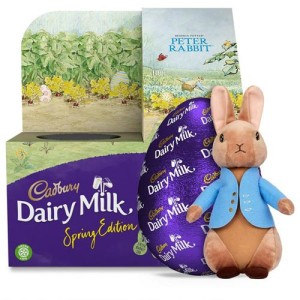 “Easter is a good example of a good opportunity for licensing. Brands like Peter Rabbit are already a part of this market, working with card companies and the likes of Cadbury – and there is probably even more untapped potential around Easter. That said, I think rights holders and licensees need to tackle these opportunities with careful thought and be market ready. My sense is that the best licensed products are generally those that are authentic, on-message and have a purpose behind them.”
“Easter is a good example of a good opportunity for licensing. Brands like Peter Rabbit are already a part of this market, working with card companies and the likes of Cadbury – and there is probably even more untapped potential around Easter. That said, I think rights holders and licensees need to tackle these opportunities with careful thought and be market ready. My sense is that the best licensed products are generally those that are authentic, on-message and have a purpose behind them.”
Christmas remains by far the biggest opportunity for the licensing industry, but lessons can be taken from it for all seasonal celebrations, says Ian. “Things have shifted, with a greater commitment from licensees and rights holders to developing bespoke materials that make sense for the occasion. With Aardman we have had a lot of success in rolling out specific Christmas assets for Wallace & Gromit, for example. It makes sense to use visuals that suit the occasion rather than trying to crowbar things in. I think other opportunities are out there and others are emerging – around events such as World Book Day and Comic Relief, for example – while we also need to be aware that society is changing. Licensing needs to embrace these changes in regards to diversity and cultural differences.”
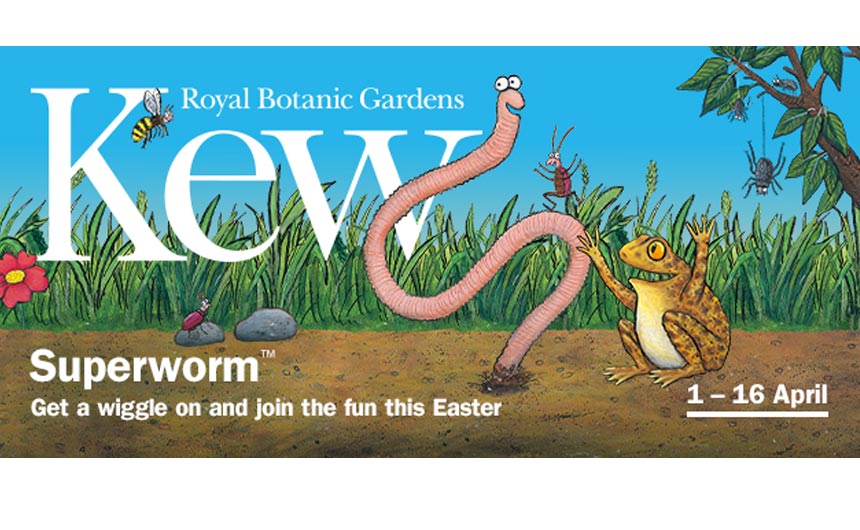
With kids out of school and parents looking for things to keep them entertained, Easter is prime time for the experiential sector.
“We’ve been proactively working to expand our experiential portfolio with both seasonal and permanent attractions,” says Aidan Taylor-Gooby, head of licensing at Magic Light Pictures. While the company’s Forestry England character activity trails and AR apps (Zog is the latest forest star for 2023) at 26 sites nationwide remain hugely popular, as do its theme park attractions including as The Gruffalo River Ride Adventure and Room on the Broom – A Magical Journey! at Chessington, bespoke seasonal activations are also going down a storm.
“Currently we have two activations running at Easter: Pip and Posy at Whipsnade Zoo [from 1 April to 9 May] and Superworm at Wakehurst and Kew [from 30 March to 23 April],” says Aidan. “Post pandemic it is great that people are starting to visit our attractions again, but with the cost of living crisis we think people are likely to keep their activities to key points in the calendar, such as holidays, so seasonal celebrations are going to become increasingly important. And one benefit of seasonal activities is that they allow us to broaden the reach of the places where we can hold events.”
Certain Magic Light Pictures characters are naturally suited to particular seasonal celebrations, Aidan explains. “Halloween is ideal for Room on the Broom. The trail we held at Wakehurst last year recreated Witch’s windswept adventure through 3D installations and family friendly activities.”
Like Magic Light Pictures, Penguin Random House is fortunate to own and manage instantly recognisable seasonal brands, including Peter Rabbit and The Snowman. “Peter is the ultimate Easter bunny,” says David Sprei, commercial director, Penguin Ventures, “a classic and trusted gender-neutral character brand that works across multiple generations around the world. He resonates across so many categories and particularly well in gifting spaces at Easter, be it our Cadbury partnership or across the infant space with plush, apparel and collectibles.”
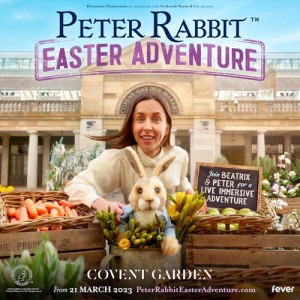 This Easter, the Peter Rabbit Easter Adventure in Covent Garden (21 March to 16 April) will see Peter and other iconic characters such as Benjamin Bunny and Mrs Tiggy-Winkle let loose in one of central London’s most picturesque and iconic locations.
This Easter, the Peter Rabbit Easter Adventure in Covent Garden (21 March to 16 April) will see Peter and other iconic characters such as Benjamin Bunny and Mrs Tiggy-Winkle let loose in one of central London’s most picturesque and iconic locations.
“We consider all cultural and seasonal celebrations and explore opportunities for our global brands, providing we connect our fans with our brands in an authentic and relevant way,” says David. “The seasonality factor provides us with tentpole moments across the year which sit alongside and complement our all-year-round business, providing an opportunity to refresh our core assets. Christmas offers the most volume for us but all our seasonal activities are key to our success and growth and help support our ‘always on’ strategy.”
Peter Rabbit gets a second wind later in the year, in autumn. “He is intrinsically linked to nature and the outdoor world, inspiring our creative which uses pumpkins, autumnal references and harvest at this time,” says David. “Penguin Ventures sits within the world’s biggest publishing house and so World Book Day is key for us too, offering many opportunities at retail for dress-up. This is an area we see growing and which has become the perfect shareable social media moment for parents.”
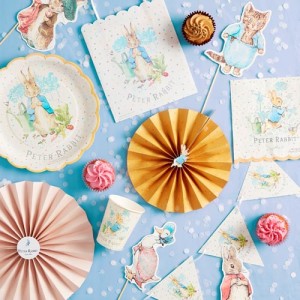 Alice Knight is marketing manager at fancy-dress specialist Smiffys. “Seasonal events are the backbone of our industry,” she says. “Halloween, Carnival and World Book Day have always been our biggest seasons, but in recent years we have seen an increase in customers celebrating the smaller events throughout the year as well. With social media ever-present in our lives, and the memories of celebrations missed during the pandemic, our customers are taking every event as a reason to party.”
Alice Knight is marketing manager at fancy-dress specialist Smiffys. “Seasonal events are the backbone of our industry,” she says. “Halloween, Carnival and World Book Day have always been our biggest seasons, but in recent years we have seen an increase in customers celebrating the smaller events throughout the year as well. With social media ever-present in our lives, and the memories of celebrations missed during the pandemic, our customers are taking every event as a reason to party.”
Smiffys’ bestselling Easter and spring season line is its Peter Rabbit Classic Tableware. “In general, licensed seasonal products are successful for retailers as customers may already have positive association with the brand or character featured on the product,” says Alice. “This doubles the appeal of the product range for the customer, featuring both their favourite brand and adding to the celebrations of the season – such as throwing a Peter Rabbit tea party for Easter weekend.”
For those who can’t party together at Easter, sending greeting cards can be the next best thing. According to the most recent figures from the Greeting Card Association (GCA), the UK public spent over £7 million on single Easter cards in the UK in 2021.
“While everyday cards tend to be the most popular overall, seasonal celebrations are still proving to be great occasions to remind loved ones how much they mean to you,” says Claire Bates, marketing manager at Danilo. “Spring seasons account for approximately 10% of sales volume and value in the single greetings card market and we see similar figures reflected at Danilo. We’ve seen an increase in demand for Easter cards and money wallets over the past few years and we have seen more retailers request these seasonal products.”
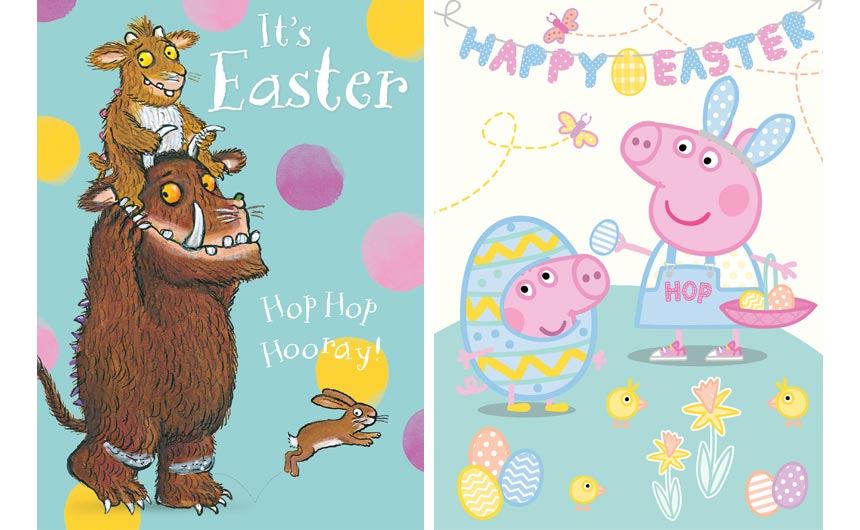
Danilo stocks a wide range of official licensed brands for Easter. “Younger brands such as Peppa Pig, Peter Rabbit, Thomas & Friends and PAW Patrol tend to perform well in this category,” Claire says. “However, brands appealing to younger as well as more mature audiences – such as Brightside and Mr Men & Little Miss – are also seeing an increase in demand.”
It’s clear that licensing can make a difference in competitive categories and help a manufacturer achieve stand-out. “Licensed brands have a great appeal to both retailers and consumers, due to their familiarity and popularity,” Claire concludes. “Consumers tend to actively seek out brands they know their loved ones enjoy.”
“We have to go back to basics and reinforce the fact that a successful, well-established licence is bringing value to the table,” says Ian Downes. “It delivers an audience, a following and a uniqueness. Often I think we can undersell ourselves and forget what makes a successful licence successful. Generally it motivates consumers to buy or interact with it; they have a passion for it. We can build on this with appropriate design development, plus a focus on areas like social media support and in-store activity, but I think it is important that as an industry we pick and choose our moments. A sensible licensing strategy is often the one that chooses to play to an IP’s strengths and doesn’t try to be involved everywhere. Less can mean more.”
































